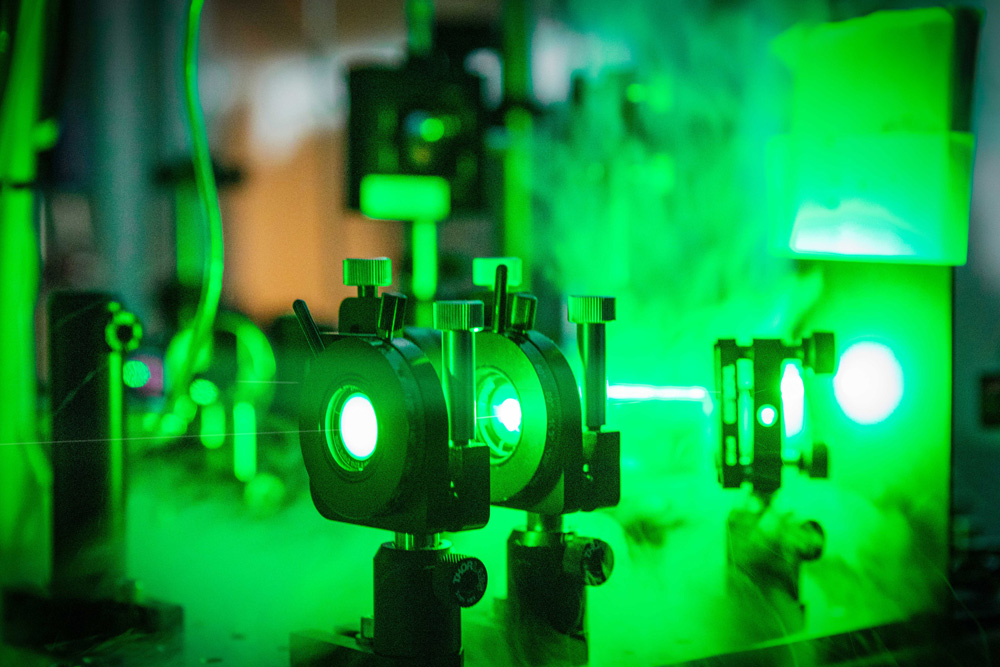A micro-accelerator for MeV electrons: TIFR Hyderabad researchers generate super-fast electrons with table-top laser systems
In massive particle accelerators, sub-atomic particles (like electrons) are sped up to super-high speeds comparable to the speed of light towards a target surface. The collision of accelerated sub-atomic particles gives rise to unique interactions enabling scientists to obtain a deeper understanding of the fundamental properties of matter.
Conventionally, laser-based particle accelerators require expensive lasers (in the range of 1-20 million USD) and are contained in massive national facilities. A set-up as complex as this is able to accelerate electrons to megaelectronvolt (MeV) energies. But can a simpler laser costing only a tiny fraction of the presently used lasers, be used for designing comparable schemes of particle acceleration?
In an exciting leap, scientists from the Tata Institute of Fundamental Research, Hyderabad (TIFRH) have designed an elegant solution to successfully generate MeV (106 eV) temperature electrons at a mere fraction (100 times smaller) of the laser intensity previously thought necessary. The technique implements two laser pulses; first to create tiny, controlled explosion in a microdroplet, followed by a second pulse to accelerate electrons to megaelectronvolt (MeV) energies. What's even more exciting is that they achieved this with a laser that's 100 times less than what was previously thought necessary, making it more accessible and versatile for future research! The implications of this discovery can be dramatic due to the ability to produce high-energy electron beams for applications that range from non-destructive testing, imaging, tomography and microscopy and can influence material science to biological sciences.
The set-up developed by TIFRH researchers uses a millijoule class laser, firing at a rate of 1000 pulses a second with ultrashort 25 fs pulses, and is used to dynamically chisel micro-droplets of 15 µm diameter. This dynamic target shaping involves two laser pulses working in tandem. The first pulse crafts a concave surface in the liquid drop, and the second pulse drives electrostatic plasma waves, propelling electrons to MeV energies.
Electrostatic waves are oscillations in plasma are much like the mechanical disturbances created in a water pond when you through a stone. Here the laser creates disturbances in the sea of electrons and generates an “electron tsunami” that breaks to give high energy electrons much like the splash of a wave in the sea coast. The process generates not one but two electron beams, each with distinct temperature components: 200 keV and 1 MeV. This innovation, produces directed electron beams beyond 4 MeV with a laser that fits on a tabletop, making it a game-changer for time-resolved, microscopic studies across diverse scientific fields.
<p>Conventional laser-based electron acceleration schemes hinge on the generation of high accelerating electric fields that require massive and complex lasers. Challenging this limitation of large lasers, researchers at TIFRH have found a ground-breaking way to generate super-fast electrons with...
www.eurekalert.org






